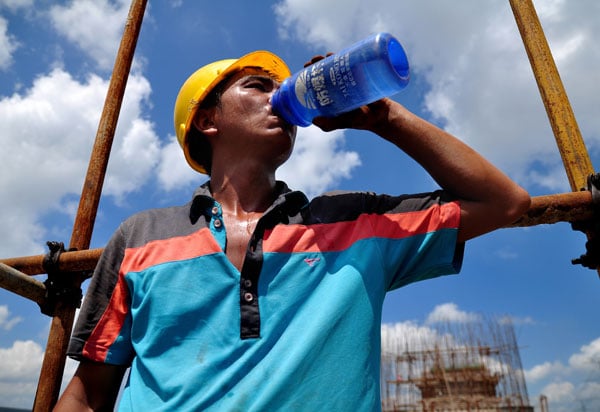Buildings rise with the heat,
pathetic monuments
to the wretched needs
of the insatiable few.
Stadia,
hotels,
offices,
towers,
parking lots:
architectural follies
lined up as garish dominoes
upon the heaving, sweating
backs
of the common good.
Green roofs
and cooling walls
cannot compete
with these burning obsessions
to truly
make a mark.

This poem is inspired by recent research, which has found that global warming is likely to deepen environmental injustice in urban areas.
Environmental injustice can be thought of as the unequal distribution of negative environmental consequences across specific groups and communities. One of the most infamous recent examples of environmental injustice is the Flint water crisis, in which the drinking water for the city of Flint, Michigan became contaminated with lead and other waste products. This crisis disproportionately affected minorities and low socioeconomic classes that could not afford to fix the problem, find other sources of water, or leave the area. Many other studies have also shown that low-income areas and communities of colour are overwhelmingly burdened with toxic landfills, polluting industrial plants, excessive rail traffic, and other pollution sources.
In this new study, researchers have investigated how heat-induced labour loss (i.e. the amount of labour that is lost because of injuries and death brought about by extreme temperatures) also presents a growing example of environmental injustice. By modelling the heat stresses that will affect approximately 230 Chinese cities over the course of the next few decades they found that urban heat stress will create significant labour losses, equating to $5.11-5.82 billion in additional losses per year by the middle of this century – more than double the current estimate of $2.11 billion. The majority of the economic losses in these urban areas will be borne by those who work outdoors and for low wages, such as those in construction and manufacturing, thereby deepening income inequality. The researchers suggest that the use of adaptation strategies such as green roofs and cool walls, can be used to effectively lower the urban temperature, thereby reducing heat-induced labour loss whilst also reducing the inequality-related impact on lower-paid sectors.
Discover more from The Poetry of Science
Subscribe to get the latest posts sent to your email.